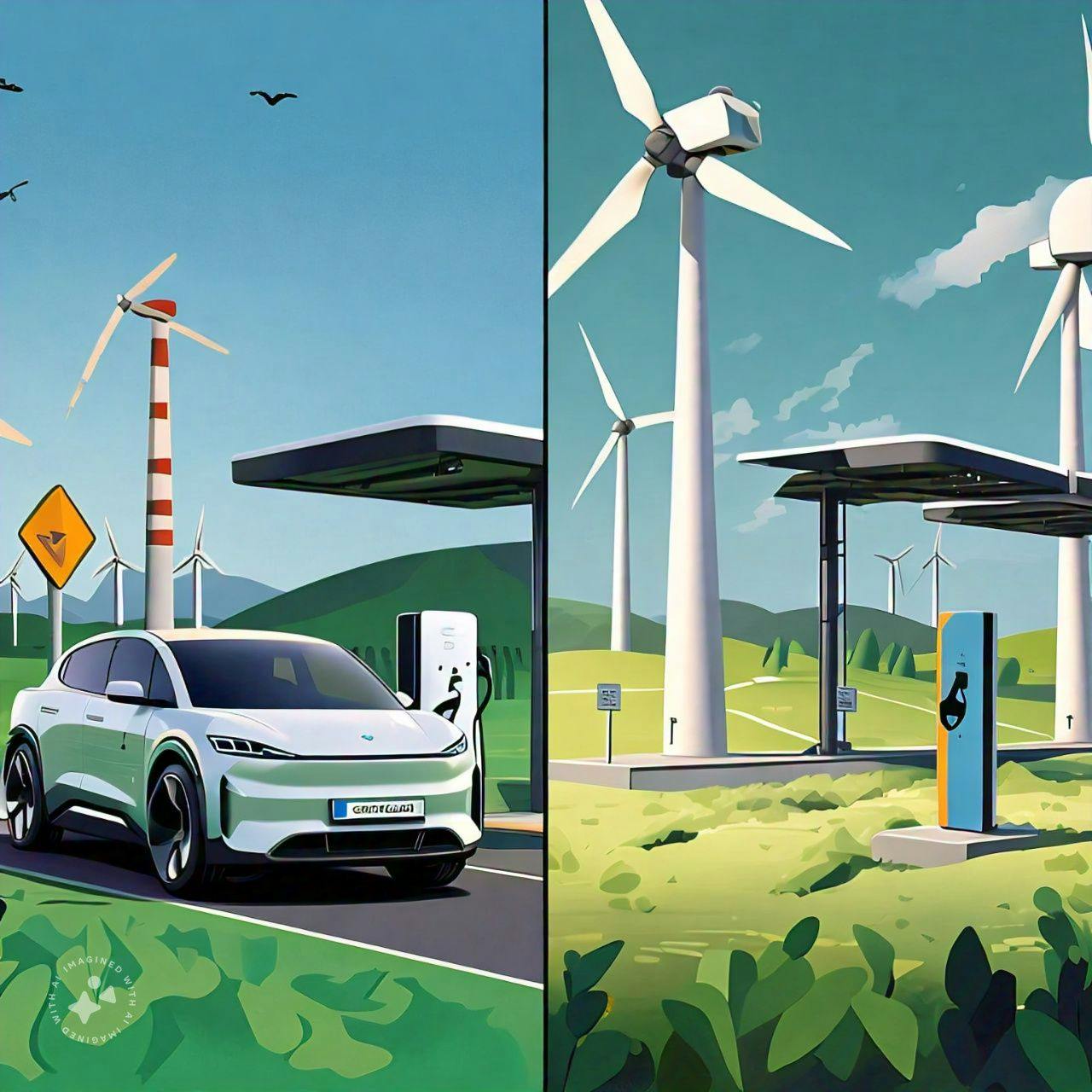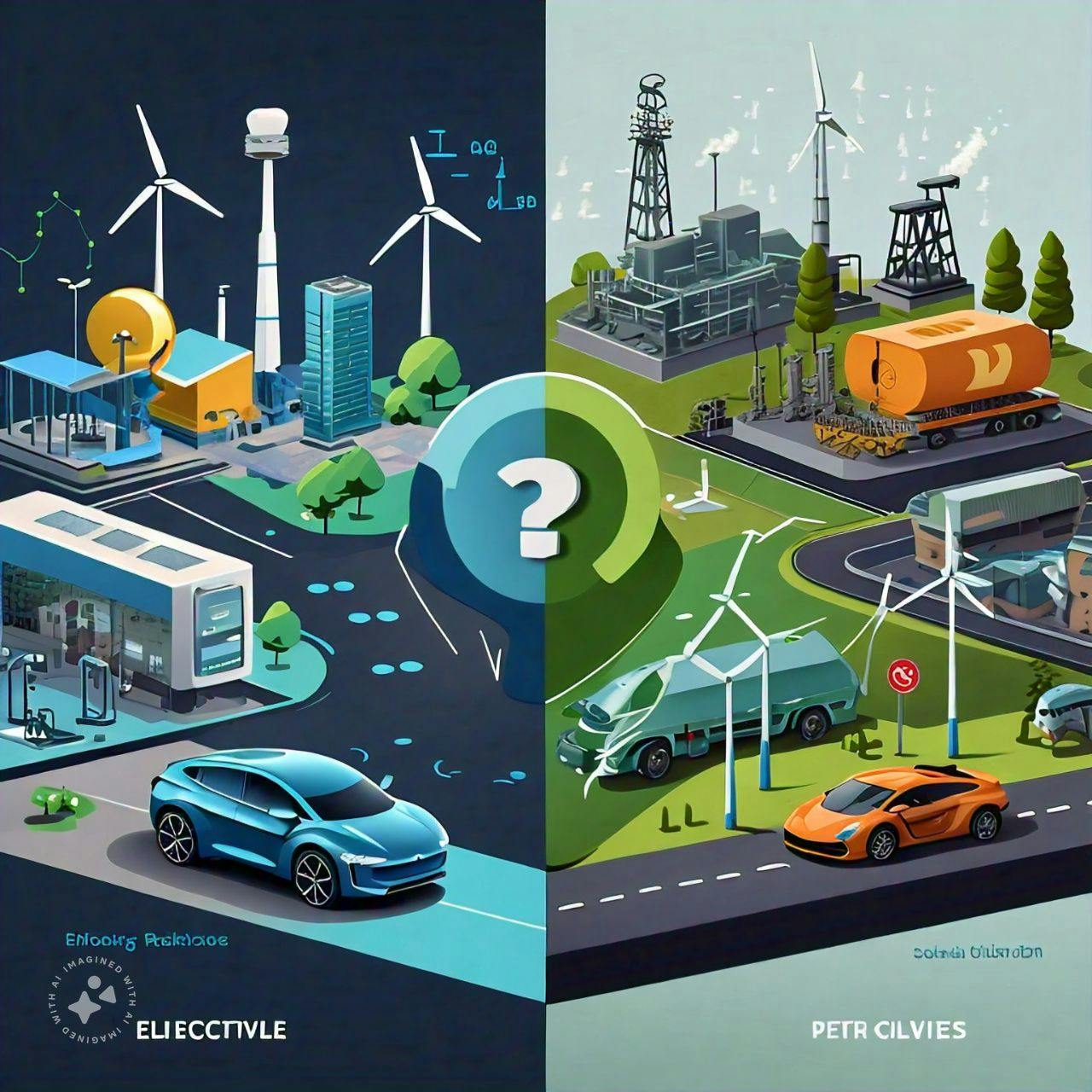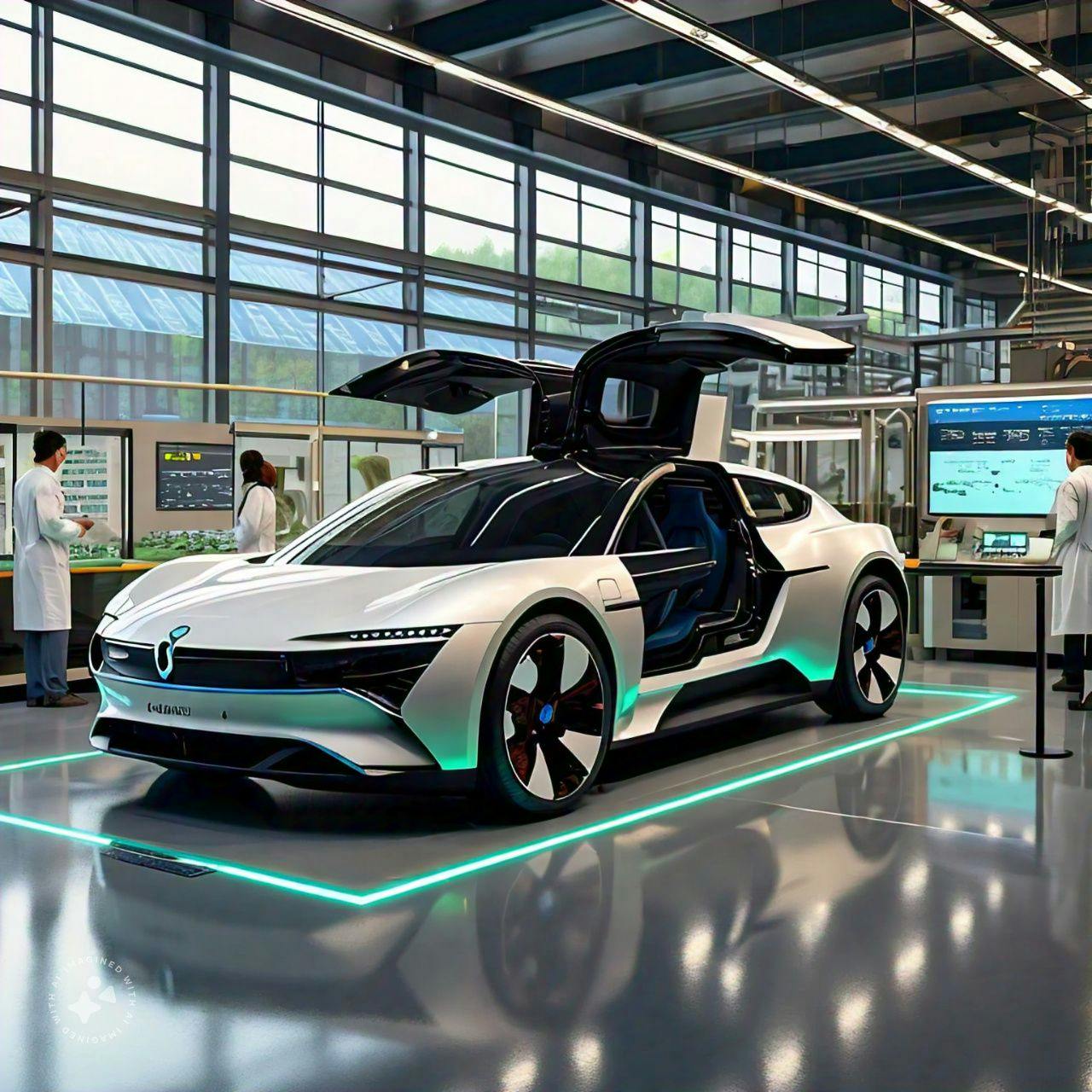Sign up. Be inspired. Get clicking.
The carbon footprint of electric vehicles: A comprehensive analysis
1 February 2023
In recent years, the discussion surrounding electric vehicles (EVs) has gained considerable traction due to their potential to reduce greenhouse gas emissions when compared to traditional petrol-powered cars. Whilst it is widely acknowledged that EVs produce fewer emissions during their operational phase, the full spectrum of their carbon footprint is less understood. This analysis ventures into the intricacies of electric vehicles, examining not just their operational benefits but also the hidden environmental costs associated with manufacturing, shipping, and charging these vehicles.

Manufacturing electric vehicles: More than just assembly
The journey of an electric vehicle begins long before the car rolls off the assembly line. The production of EV batteries stands out as one of the most significant contributors to the overall carbon footprint of electric vehicles. The manufacturing process for lithium-ion batteries, essential for the operation of EVs, involves a multitude of raw materials, notably lithium and cobalt. These materials are often mined in regions with limited environmental regulations, leading to significant ecological degradation.
The extraction processes involved are marked by considerable carbon emissions. Mining activities often utilise heavy machinery that operates on fossil fuels, generating emissions that contribute directly to the carbon footprint of the battery. Additionally, the transportation of these raw materials to manufacturing plants further amplifies the environmental impact. Gigafactories, where these batteries are produced, require substantial energy, which in many circumstances is sourced from fossil fuel combustion. As a result, studies have indicated that the carbon emissions associated with battery production can account for nearly 40% of the total emissions produced during the vehicle's lifecycle.
In contrast, petrol-powered vehicles also have their own manufacturing footprint, which includes emissions from the extraction of oil, refining processes, and the production of various components. However, the stark difference lies in the nature and scale of emissions from EV battery manufacturing, which is uniquely high.

The logistics of shipping: A hidden cost
The complexities of transporting vehicles and their components contribute another layer to the carbon equation. Every electric vehicle is the culmination of various parts manufactured in different locations, making the logistics of shipping essential to their production. This shipping adds considerable emissions, particularly when fossil fuel-powered transport modes are employed.
Shipping emissions come from multiple stages, including the movement of raw materials to battery manufacturers and the final delivery of the assembled vehicle. Depending on the distance and method of transportation—whether it be via lorry, ship, or air—the carbon cost can vary significantly. As electric vehicles gain popularity and demand increases, the logistics chain also grows, revealing that the carbon cost of transportation can be second only to that of battery manufacturing.
Moreover, the global nature of modern supply chains often complicates the carbon footprint associated with electric vehicles. If the shipping routes are inefficient or if fossil fuels primarily power the vehicles used for transport, the emissions can significantly escalate.
Charging electric vehicles: An overlooked aspect
Whilst the operational phase of electric vehicles is predominantly clean, the source of the electricity used for charging cannot be overlooked. In many regions, the electricity grid is still heavily reliant on fossil fuels. Therefore, unless an EV is charged using renewable energy sources, it indirectly contributes to carbon emissions during its refuelling process.
This dependency on the grid means that many electric vehicle owners are still, in effect, utilising fossil fuels to power their vehicles, albeit indirectly. The emissions resulting from this phase can be substantial, especially in areas where coal or natural gas is a primary energy source for electricity generation.
It's vital to recognise that the emissions associated with charging can be reduced if an EV owner utilises solar, wind, or other renewable energy sources for their electricity needs. However, the practicality of this varies significantly based on individual circumstances, such as the availability of renewable energy infrastructure and the geographic distribution of charging stations.
This paragraph is largely accurate and well-structured. The claims about the environmental impact of EV charging and its dependence on the electricity grid's energy mix are supported by current research. The statement about the potential for substantial emissions in areas reliant on coal or natural gas for electricity generation is correct.


Comparing the whole lifecycle: EVs vs. Gasoline cars
When evaluating the carbon footprints of electric vehicles in comparison to traditional petrol vehicles, it's crucial to consider the entire lifecycle. Whilst electric cars tend to have lower operational emissions, the manufacturing and charging phases can introduce significant variability into the overall equation.
Petrol-powered cars, while more straightforward in their operational emissions, also have lifecycle costs that include oil extraction, refining, and combustion. Studies indicate that the total emissions across the lifecycle of a petrol vehicle can be lower than an EV in specific contexts, especially when accounting for the manufacturing impacts of lithium-ion batteries.
The overarching question thus emerges—what is the optimal path forward? As technology evolves, battery efficiencies improve, and the grid transitions to more renewable sources, the carbon footprint of electric vehicles may decrease. Still, current data suggests that a direct comparison has multifaceted implications that must be carefully examined.
The societal implications of EV production
Alongside the environmental impacts, the societal considerations inherent in the production of electric vehicles also provide fertile ground for discussion. The supply chains necessary for mining lithium and cobalt are often fraught with challenges, including labour abuses and environmental degradation.
For instance, cobalt mining has faced criticism for its practices in certain countries, highlighting concerns about human rights violations and unsafe working conditions. This dilemma poses a significant challenge to the narrative surrounding electric vehicles as a sustainable alternative, raising questions about the broader implications of their adoption.
As consumers become increasingly aware of these issues, they may seek transparency in the supply chain of their vehicles. The demand for responsibly sourced materials could eventually drive innovations within the industry, leading to alternative methods of battery production that do not rely on harmful mining practices.


Innovations in battery technology: A potential solution
The pursuit of sustainable alternatives has given rise to innovations in battery technology. Researchers and companies alike are exploring various avenues to reduce the carbon footprint associated with EV batteries. Solid-state batteries, for example, promise greater efficiency and safety whilst potentially reducing reliance on scarce raw materials.
Additionally, advancements in battery recycling technology could extend the lifecycle of batteries, lessening the need for new raw material extraction. Effective recycling programmes can recapture valuable elements, allowing them to be reused in new batteries or other applications, thereby reducing overall environmental impact.
These methodologies present exciting opportunities to revolutionise electric vehicle production and significantly diminish the carbon footprint associated with manufacturing and charging.
Toward a sustainable future: Recommendations
As we navigate the intricate landscape of electric vehicles and their carbon footprints, several recommendations stand out for consumers, manufacturers, and policymakers alike:
- Enhance Transparency: Manufacturers should prioritise transparency in their supply chains, disclosing the origins of their materials and the conditions under which they are sourced.
- Invest in Renewable Energy: Encouraging a faster transition to renewable energy sources in electricity generation will help reduce the carbon emissions associated with the charging of electric vehicles.
- Support Innovative Technologies: Investing in research and development for battery technology and recycling processes can pave the way for more sustainable production methods.
- Promote Responsible Mining: Advocating for responsible mining practices can reduce the negative impacts associated with lithium and cobalt extraction.
- Educate Consumers: Providing consumers with information about the full lifecycle costs and environmental impacts of electric vehicles is essential for informed decision-making.

Conclusion
In conclusion, whilst electric vehicles offer a promising route toward reduced emissions in transportation, a holistic understanding of their carbon footprint is crucial. By recognising the complexities involved—from manufacturing to charging and beyond—stakeholders can work collaboratively to foster sustainable practices that benefit both the environment and society at large.
For further insights and detailed analysis on the topic of electric vehicles and their environmental impact, explore resources such as 8 Billion Trees, which delve into these intricate issues.
17 South Street
Auckland 1010
New Zealand
info@carbonclick.com- -
- X
Subscribe now to stay up to date with CarbonClick, carbon offsetting and climate action.
By signing up you agree to our Privacy Policy.


